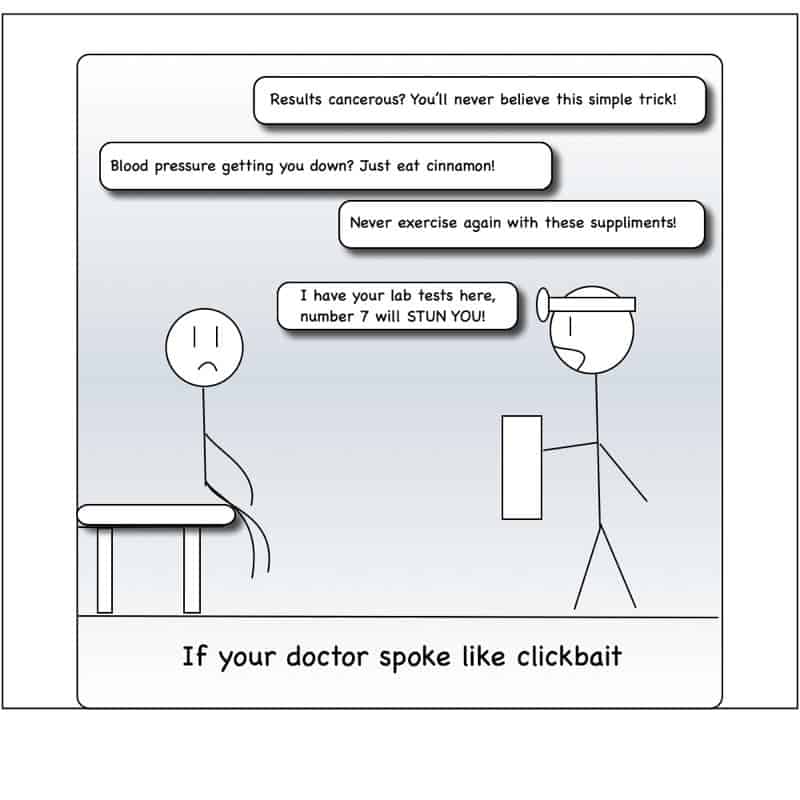Spoiler: If it’s too good to be true, it’s probably fake.
The answer to instant weight loss, miraculous disease cures, or science’s biggest queries all can be found by simply clicking a link. Right? Users are constantly bombarded with overly advertorial content designed to shuffle traffic to a webpage. Often full of sensational headlines, dubious claims, and questionable content, clickbait lures readers toward larger-than-life articles. These articles can be of the guilty pleasure type, because who doesn’t what to know what celebrity is involved in infidelity. Yet, clickbait of the insidious variety offers unfounded medical advice to exploit people into adhering to a subscription service or purchase untested supplements. Worse yet, many policy decisions are based on unsubstantiated science claims. For example, misleading the public on dangers of opioids in pregnant woman leads to ineffective policies and wasted public resources, while at the same time leaving the real problem unaddressed.

Our brains function in a way called semantic congruity, or simply put, humans expect a sentence to sound a certain way. For example, what words should end these sentences?
- A) Janelle likes her coffee with milk and ______.
- B) Don’t touch the stove it is ____.”
Many people would input A) Sugar and B) Hot, those are congruent with what our brain expects to hear. Whereas, if A) vanilla or B) sticky were inserted into the sentence, they would sound off to our brains, or incongruent. According to research in the journal science, semantic incongruity creates a strong negative response in our brains. The ubiquitous nature of certain sentence patterns and structures in our everyday lives embed them in a way that adds credibility to what we are reading. If information is presented in a way that is harmonious with our brain, it is, therefore, more believable to a reader.
Additionally, our brains are designed for confirmation bias. According to Mark Whitmore, PhD, assistant professor at Kent State, “At its core is the need for the brain to receive confirming information that harmonizes with an individual’s existing views and beliefs. In fact, one could say the brain is hardwired to accept, reject, misremember or distort information based on whether it is viewed as accepting of or threatening to existing beliefs.” Many of the beliefs we currently hold are derived from what we learned from childhood. Whether true or false, these beliefs have gone unchecked as people have reached adulthood. Our short-term memories are stored in the hippocampus, a small seahorse-shaped structure in the brain. After repeated exposure, information and memories are consolidated to the neocortex portion of the brain where they are subconsciously retrieved and used to compare new information. Which may in part explain why people still believe in unicorns. By tapping into unchecked beliefs that clickbait readers subconsciously have, scammers and clickbait can sell nearly anything.
Even further, people are more likely to believe simple ideas that can be understood quickly, and with little background. Perhaps modern medicine is at fault for making scientific data inaccessible to the general public, either by complex jargon or obscure journals. People looking to use the internet to find health-related information are drawn to ideas that are easily understood and explained, and where medicine fails, clickbait is happy to fill the gap. Our brains will cling to easy ideas about our diets, health, and everyday lives, which makes people vulnerable to the medical information put out in non-evidence-based articles.
Clickbait will only rise in the upcoming years, making it imperative that before starting a new fad diet or changing a medical routine, consult a physician.



